Abstraction 2: Abstraction Unplugged
< Back to Building Block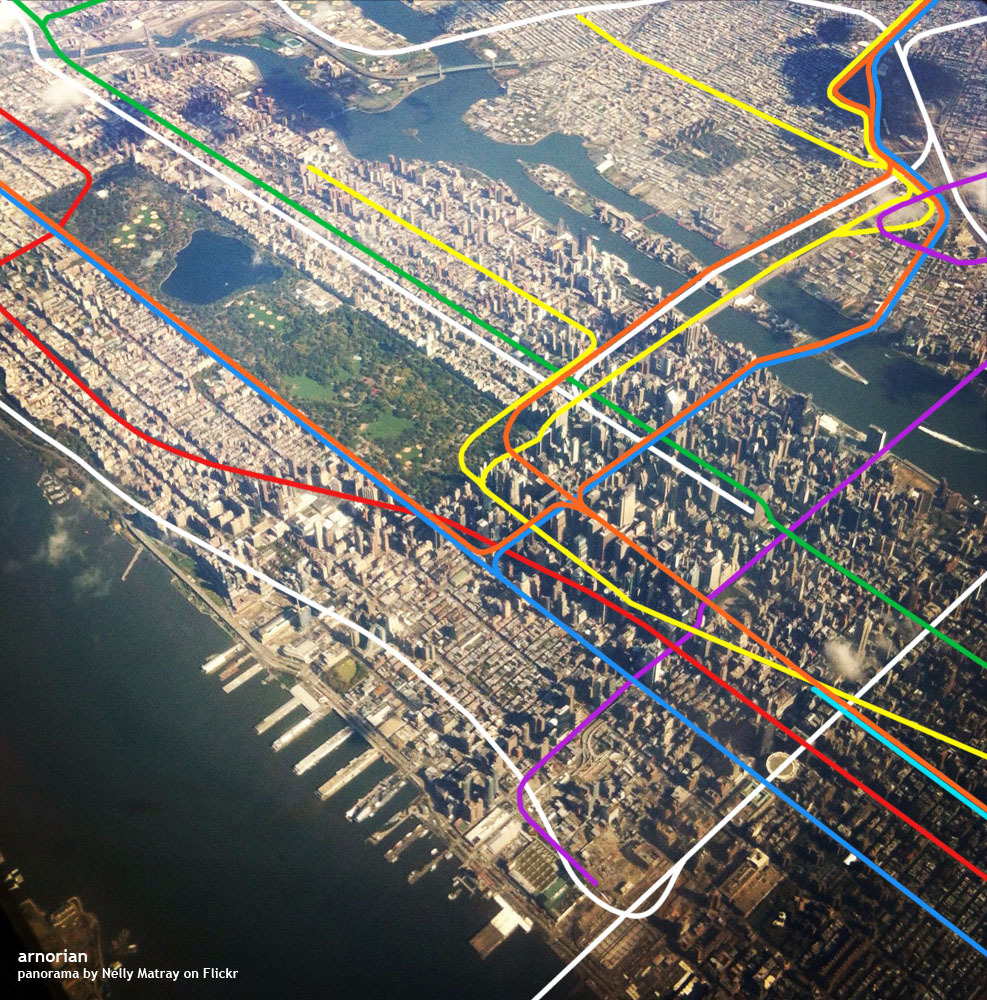
In the Intro to Abstraction project, we defined abstraction as the process of isolating key details while ignoring the remaining elements of a given idea. In this project, you will put abstractions to use in order to effectively solve examples of real-world issues.

New cities are overwhelming places for tourists. There is so much to see and do, various methods of transportation, crowds and sometimes, new languages. In this activity, you are acting as a tour guide and must come up with a tour that gets a tourist from their hotel to all the city sights and back to their hotel at the end of the day without visiting any location twice.
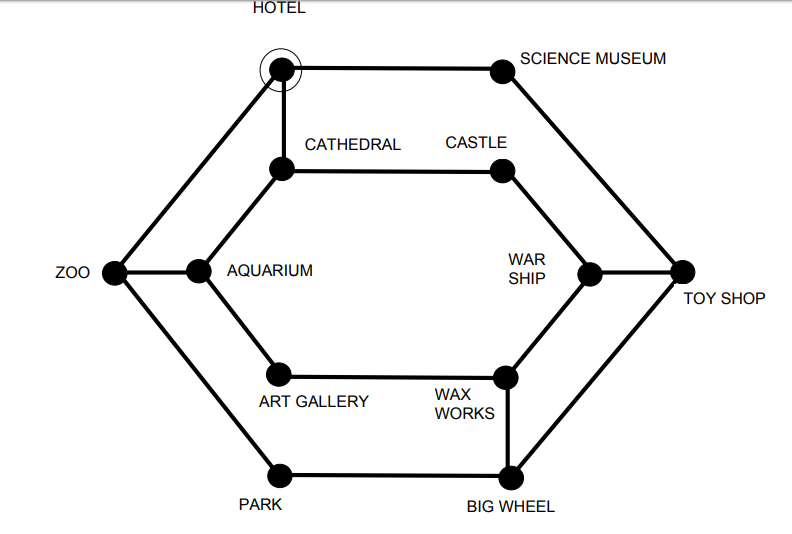
In order to solve this problem of seeing all the attractions in a city in one day, you (the tour guide) decide to abstract a map of the city so that you can only see the locations of city sites and direct paths from one site to another (image above). This map ignores certain features (such as, distance between sites, cross streets, etc) and simplifies it by presenting only information that is essential to see all the sites,
Your goal in creating this abstracted map is to hope to find the best order to visit each site but without getting bogged down with figuring out exactly which street or train line you will take from one location to another. Those details will be solved later.

Your Task
In order to lead tourists from the hotel and back while also visiting every location once and only once you will need to plan!
Make a copy of this Tour Guide Planning Sheet to get started plot your journey.
Reflection
In your design journal, upload a URL (if digital) or a photo (if hand-written) of the Tour Guide Planning Sheet after you have completed it.
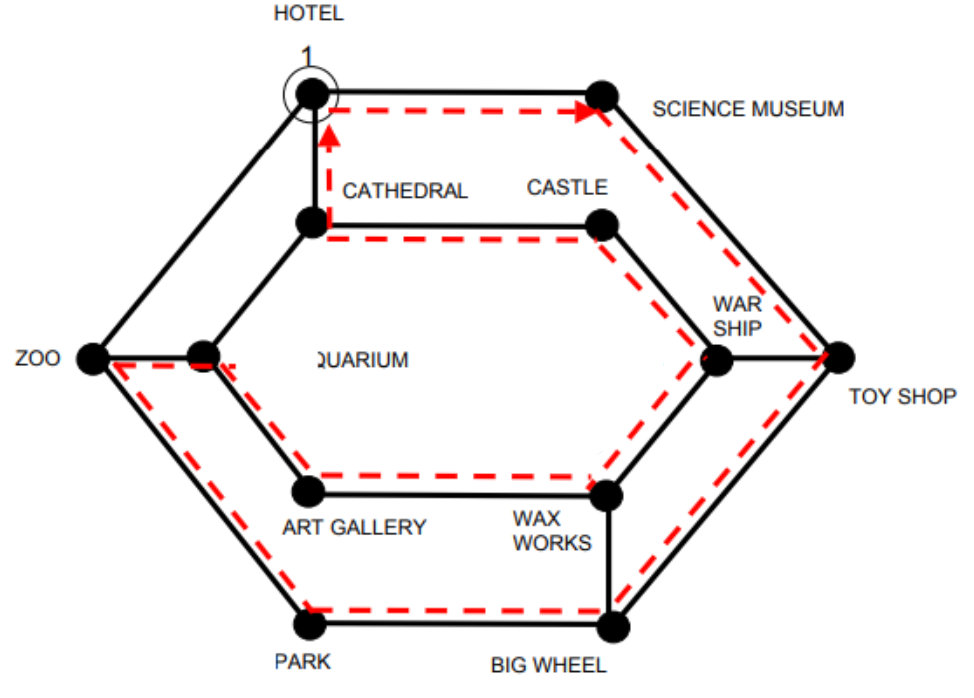
You probably found this puzzle pretty easy to solve. Part of what made it easy was how the information was presented. Instead of looking at a detailed map, you had just the information you needed.
Programmers would call this map a graph because like other graphs, it takes information and presents just what you need to know in a visual format that helps you understand the information. This style of graph has both nodes (the terminal spots, in this case the sights) and edges ( direct paths to the nodes between the sights).
With abstraction, you were able to take a big problem (seeing all the sites in one day, without repeating sites) and break it into two smaller, more manageable problems. By first identifying the best order to travel between sites you would be better equipped to then map specific routes you will take on the day.
Another example of abstraction using nodes and edges is the popular website Wikipedia. Every page on Wikipedia is linked to several other pages that have a connection abstracted in some way to the original page.
With this in mind, we can discover how many degrees of separation one page is from another using the links on each page!
For example, The “Unicorn” page has 1 degree of separation from the “Horse” page because it only takes us one click (node) to get from the first edge to the second edge.

Reflection
Given the fact that Unicorn is 1 degree separated from Horse and Horse is 2 Degrees separated from World War II, How many degrees of separation is Unicorn from World War II?
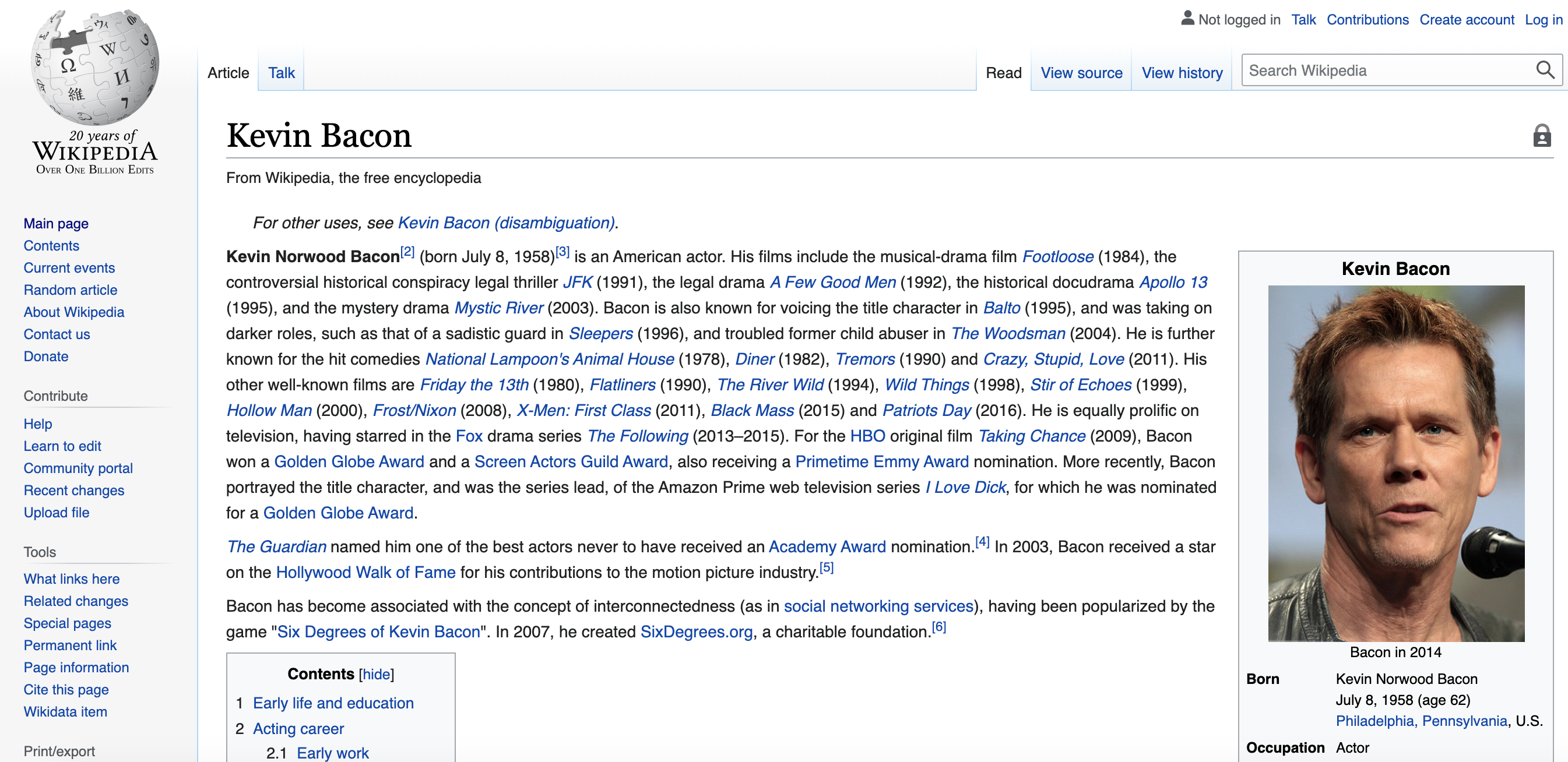
In this step, you are going to play the Wikipedia Degrees of Separation game. In this game, you are provided with a page on Wikipedia and then you are asked to find another page using only the links of the page you are currently on. Your goal is to make it from the starter webpage to the final webpage using as few clicks as possible. You might be surprised how many or how few clicks it can take to get from one page to another!
Round 1: Cat - Dog
How many clicks does it take you to get from the Wikipedia page on Cats to the Wikipedia page on Dogs using only the linked edges?
Round 2: Maya Angelou - iPod
How many clicks does it take you to get from the Wikipedia page on Maya Angelou to the Wikipedia page on the iPod using only the linked edges?
Round 3 - Random
On the home page for Wikipedia, select "Random Article" in the left menu. Then navigate to the Unicorn page with as few clicks as possible.
Reflection
Compare and contrast the way in which nodes and edges are represented in the tour guide example and in the Wikipedia game example.
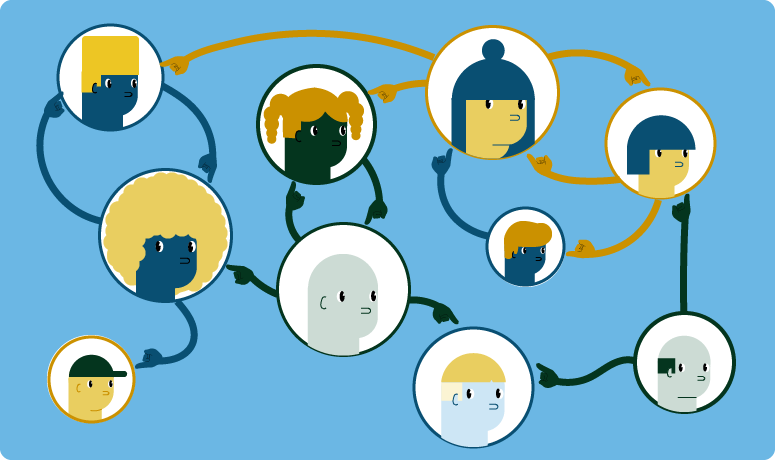
Graphs are used in Social Network Analysis. Social network analysis involves graphing networks of people and their interconnectedness to investigate commonalities and social structure. Consider how much your experience online can be altered based on the connections (edges) you have to other people (nodes) you might not even know!
Reflection
Has a social media platform ever recommended something to you that you were not interested in? Explain how abstracting one connection or interest from your profile can provide mixed results about who you are as a person.
